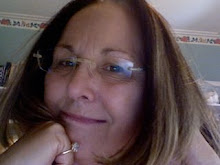I. Is There Enough Contrast
Ask yourself, "is there enough..."
• Contrast in Values - for a form to have dimension there has to be at least a light, medium and dark value.
• Contrast in Colors - Is there a range in color?
• Contrast in Temperatures - warm and cool contrasts
• Contrasts in Intensity - bright intensity of color to neutral color
• Contrast in Edges - sharp and soft edges
• Contrast in Simple and Complex busy areas contrasted to calm areas
• Contrast in brush strokes - using different brush sizes and shape
• Contrast in Repetition -- is there variety
Four Planes of Light - Are their values correct?
1. Value of Light of the Sky Plane
2. Value of Light of the Horizontal Plane or Ground
Where is the horizon? Is there more ground or more sky? Do not place the horizon near the middle of the painting. Ask, is the painting scene a mostly sky painting or mostly ground painting.
3. Value of Light of Sloping Planes (example: hill side)
4. Value of Light of Vertical Planes
III. Value Integrity of Masses
• Shadow Masses....are shadows all below a medium 5 Value?
•Light Masses .... are lights above a medium 5 Value?
IV. Focal Area -- is this the place of highest contrast elements on the painting? Are the other areas subordinate to the focal point? Are you viewing the scene and painting it as your eye sees rather than as the camera sees? Meaning, the camera puts everything in sharp focus, your eyes do not. Notice that you focus on an object and everything else is blurred in your peripheral vision. That is how you paint a scene and thus draw your viewer to your focal area.
V. Harmony -- is there color and a key?
These are the suggested check list items to consider for working through a painting to evaluate where the problems are and how to correct them.
Tuesday, October 12, 2010
KEYS...when evaluating a painting by Rick McClure
Subscribe to:
Post Comments (Atom)





2 comments:
It's an excellent checklist - especially the point about the value integrity of masses - sigh - so much to put into practice (hopefully)
I think I will just memorize this and do this check list as a routine. Rick suggested that if a part of a painting is not working to review that check list and usually gives direction to how to correct the problem.
Post a Comment